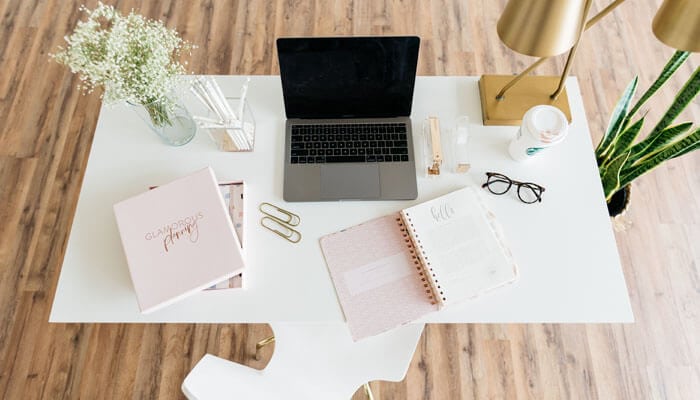The past few months have been a wild ride to say the least; from lock-downs to incessant zooming to homeschooling and travel bans, many of us have been thrust into a virtual, home-bound existence. This new reality involves an onslaught of video calls, managing of devices, tech hang-ups, tantrums (grown-ups and kids alike) and loneliness (in spite of intense togetherness with our families). We are hyper connected but also disconnected from our usual social existence. A shift of this caliber leads to stress, poor sleep and heightened anxiety…wreaking havoc on our mindset, focus and ability to be productive.
A simple but profound thought that has provided solace in my own small world is the fact that every human on this planet is being affected by the pandemic in some way, shape or form. We are all muddling through this together.
That being said, each one of us needs to find our own way of putting one foot in front of the other. The benchmarks that motivated us before may no longer be available (vacations, live events, social gatherings, going out to dinner!). The natural boundaries of our commute, office spaces and cadence of the working day have been uprooted. So where does that leave us?
How can we recreate – or perhaps redefine – what it means to have a productive day?
1. A workspace of one’s own

You might not have a home office. Hell, you might not even have a room to claim that isn’t already occupied by another working or schooling member of your family. For those in dense, urban areas this can be an especially painful problem. If you are a person who requires a quiet, clean, distraction-free space to get work done (me!), this can seem like an impossible task.
I would argue that this issue may be less about space and more about creating boundaries and signals for those around you. Begin by creating a list of non negotiable details that you absolutely need for a calm and functioning work environment. I’ll use myself as an example:
My personal requirements:
- Quiet
- Color/creativity
- Some kind of barrier (I have kids)
Potential Solutions
Quiet:
Did I mention I have kids? This means that quiet is rarely an option when working from home. But you know what I can get? Noise canceling headphones!! These are a lifesaver for me (while also saving my kids from my temper) with the added bonus of those headphones serving as a signal: mom’s working!
Creativity:
To claim a space is to declare some kind of ownership. And what better way to do that than with a beautiful object, piece of art or photograph? Perhaps it’s a mantra or image that serves as a reminder that this too shall pass…? 😉
Barrier:
Listen, this pandemic isn’t going away anytime soon, so if you need to lean in to the work setup, do it! Here are a few ideas for temporary barriers and dividers that will help you to physically separate the space and allow you to be more productive.


Looking for more inventive, think-outside-the-box ideas? Check out one of our latest webinars with Erika Woodhouse of Perch where she covers DIY strategies for working and schooling from home.
2. Creating clear-cut boundaries

Working from home requires a lot of clear and intentional setting of boundaries. It’s critical that you put these boundaries in place not just for others but for yourself as well; because as it turns out, if you don’t step in and establish a routine that works best for you, someone else will do it for you.
The boundaries you need to set while working from home come in many different forms. Here are a few examples:
- Consistent, expected working hours. If you’re home with kids and have been blessed with a door to close, then post those hours loud and clear on the outside of that door.
- Make is clear when disruptions are unacceptable. Recording a webinar? Zooming with a client? Again, make a sign or a signal that lets your family/roommates/spouse know that you are unavailable.
- Time blocking. Do you have a tough time focusing when you work from home? Work a little discipline into your day. Bust out your Google calendar and block out slots of time for specific types of work (I recommend 1-2 hour increments). ‘Eat the frog’ when you are most energetic and focused. Chunk out your days and weeks based on themed work; answering emails, team centric/internal work, writing content, training and client meetings are just a few examples.
- Email autoresponder. This one may be a bit of a stretch for a lot of folks but it could also be incredibly valuable. When working from home, you are experiencing more interruptions than ever before and emails are no exception. Incessant emails paired with an impulse to answer them all as quickly as possible is a perpetual blockade for deep work.But consider this: what if you set an autoresponder for your team and clients letting them know that you check your email twice daily; once in the morning and once in the afternoon? Imagine the time you could save and efficiency you could gain from this one, single change?
3. Pretend like you have someplace to be

I know, it’s kind of depressing. But the truth is, if we get into a working mindset, our productivity (and mental health) will be better for it. As humans, we thrive on routine and we all need an extra boost of normalcy right about now anyway, right?
So try starting your day as you would pre-pandemic: shower, get dressed (no, sweatpants do not count), have breakfast and log on in a timely fashion. Even schedule ‘water-cooler’ conversation over chat with co-workers to break up the monotony. For an extra kick; work in a 10 minute meditation at the beginning of each day. This will clear your mind, get your attitude in check as well as start your day off on a level, productive path.
If you ditch routine entirely and give in to the directionless drudgery of quarantine, your relationships and health (both physical and mental) are sure to take a hit.
4. Take more breaks

You’re sacrificing more than just productivity when you don’t take the breaks that your body and mind require. Taking sufficient breaks will help you to maintain focus, boost creativity and, most importantly, prevent burnout. Sandwich your most productive hours with a 20-30 minute pause and make sure that these breaks do not include surfing the internet. Get up. Move around. Go outside if possible. It’s amazing what a meager 30 minutes of true break time can do for your productivity. It’s so important to reset, flush out your thoughts and get the blood flowing. Oxygen and movement will unlock productivity and creativity in ways you never thought possible!
5. Don’t forget to socialize

Who knew that we would find ourselves longing for those mindless, water-cooler chats? Or those small interactions on the train or bus or walk to work? Even if you are a hard-core introvert and had revelled in prolonged quarantine, there’s a good chance your social stores have begun to run dry.
We are social creatures and need connection in order to feel whole. Socialization is essential to happiness and overall well being. All of those friendly chats and social opportunities we once took for look very different now and will into the foreseeable future.
So what to do?
Pencil it in. Seriously. I know it feels weird and unnatural but, like taking your vitamins, connecting with other humans on the regular is what the doctors order. Feel awkward and need something to do other than talk? Find a socially distanced activity like hiking, biking or tennis. You could also organize a book or podcast club to prompt discussion. Meet in person while you can and move it to zoom once it gets cold.
On the work side, ping your teammates daily for a boost in comradery and emotional energy. Simply saying good morning to your coworkers on Slack or Google Hangouts can give everyone a shot in the arm. Consider initiating regular meetings in order to deepen relationships with coworkers and stay updated with what’s happening. Heightened connection will forge emotional bonds and even ramp up problem solving efforts.



